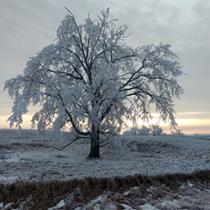Data Notification
fDOM temperature and absorbance correction algorithm updates
November 23, 2020
Errors were discovered in NEON.DOC.004931 (version A), the Algorithm Theoretical Basis Document (ATBD) for the Water quality (DP1.20288.001) data product. These errors impact the temperature and absorbance corrections applied to fluorescent dissolved organic matter (fDOM) data. None of the data streams for other parameters are impacted and the rawCalibratedfDOM data stream remains unaffected.
The ATBD document has been revised and version B will reflect the correct equations. Cyberinfrastructure (CI) code has been updated and will be deployed shortly for data reprocessing. The correct data will be available on the portal by the end of January 2021 and will be included in the first NEON data release.
Note that high uncertainty values associated with absorbance corrected fDOM data often reflect highly uncertain absorbance data. NEON plans future analyses and improvements to the fDOM absorbance correction algorithm to refine when it is appropriate to apply these corrections and whether additional flags are needed to communicate the quality of the absorbance data used for corrections. This planned change may reduce absorbance corrected fDOM uncertainty in some instances and will likely be part of a larger change to the data processing pipeline that will roll out by the end of 2021.
Please use the contact form for further inquiries; please select DP1.10094.001 in the Data Product drop-down list and include the term " INC0042196 " in the body of your request.
